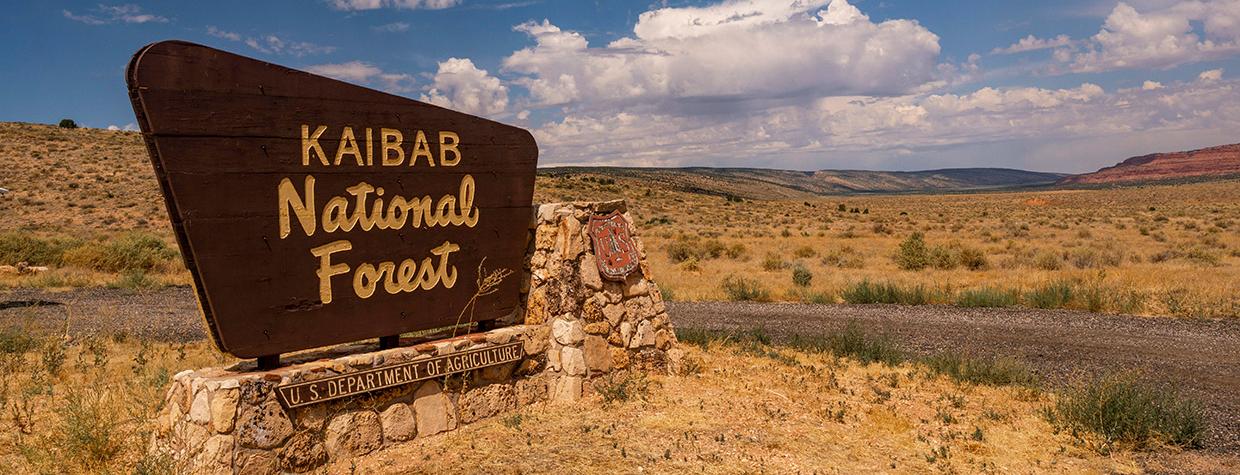Chances are, you haven’t heard of Virgil Carrell. But if you’ve spent any time at all on America’s highways, his work is as familiar as McDonald’s golden arches. Although Carrell’s achievements ranged widely, the U.S. Forest Service’s iconic signs became his legacy — they’ve endured, unchanged, for six decades.
Carrell was born to railroad workers who spent their lives in remote parts of the Pacific Northwest, so it isn’t surprising that he earned a degree in forestry. During his long career with the Forest Service, he raised his own family in similar conditions.
Hardworking, intellectually curious and well liked, Carrell, who went by the nickname “Bus,” was named Ranger of the Year in 1949. In the early 1960s, he was in charge of Colorado’s San Juan National Forest when the agency transferred him to its headquarters in Washington, D.C. There, Carrell accepted the task of standardizing the hodgepodge of Forest Service signage. He created a committee that included artist Rudy Wendelin, best known for his renderings of Smokey Bear. With characteristic enthusiasm, Carrell and his team set off across the country to study signs and survey the agency’s own.
Carrell adopted a lofty view of the lowly sign. Apart from their utility, he believed signs could appeal to both the eye and the heart. Well-designed signs, he believed, could create anticipation and excitement while stimulating the imagination. “If you have arrived at your destination without difficulty and enjoyed the trip,” he concluded, “chances are that the route was well signed.”
Carrell favored wood and recommended the familiar brown with cream-colored lettering to blend with the environment. And he proposed a “family of shapes” that tied the signs together: a lopsided “trapezoid” for national forests, a bow-tie-like shape for the Continental Divide, and variations for trails and wilderness areas.
That work earned him another award, but, while proud of his accomplishment, Carrell didn’t take himself too seriously. His daughter, Carolyn Dennison, recalls that whenever they’d pass a Forest Service sign, Carrell would jokingly tell his passengers to put their hands over their hearts and bow their heads.
After retiring, Carrell bought an Airstream trailer and organized RV tours all over the country. “He loved Arizona,” Dennison says, and after stopping for gas in Florence, he decided to settle there. RVers who wintered in the state were always looking for a place to park. So, naturally, Carrell formed another committee — and helped develop the Florence Gardens mobile home park. He spent the rest of his long life there, dying in 2014, shortly after his 100th birthday.

